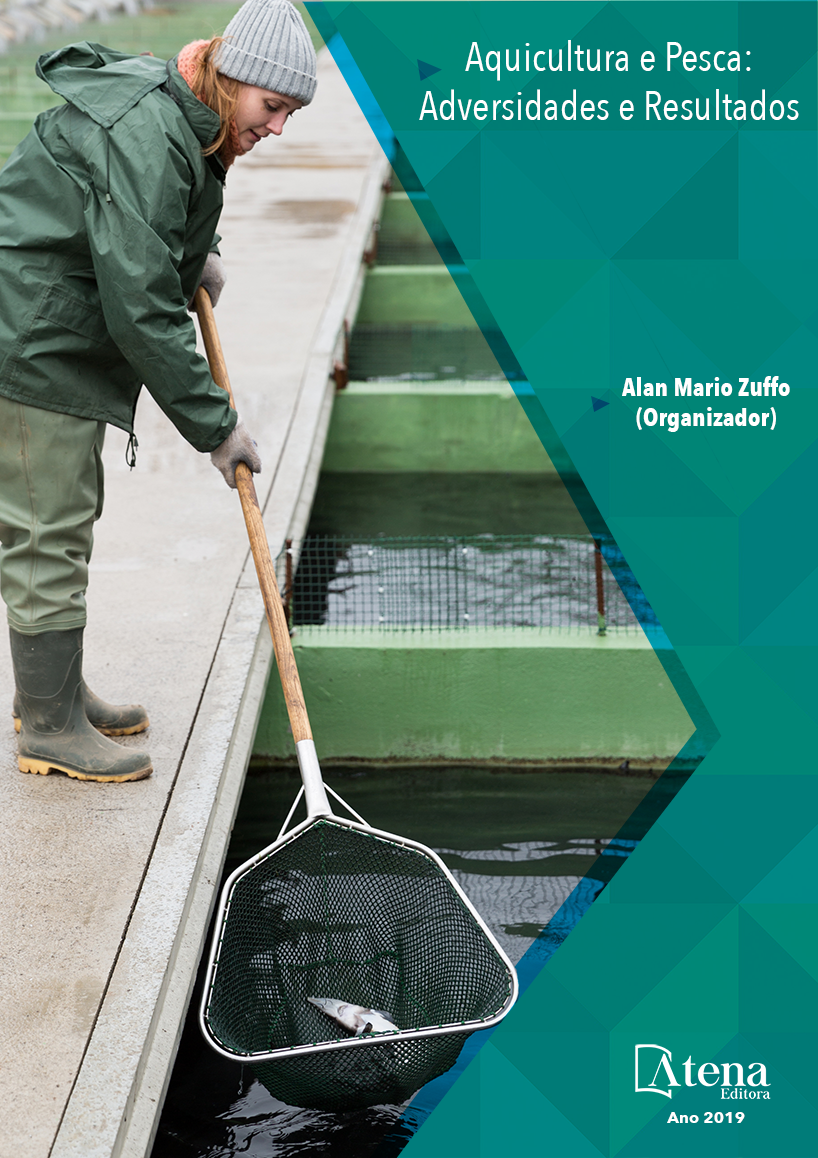
DESEMPENHO PRODUTIVO DE TILÁPIA E HORTALIÇAS VERDES EM UM SISTEMA AQUAPÔNICO EM PEQUENA ESCALA
DESEMPENHO PRODUTIVO DE TILÁPIA E HORTALIÇAS VERDES EM UM SISTEMA AQUAPÔNICO EM PEQUENA ESCALA
-
DOI: 10.22533/at.ed.27219290323
-
Palavras-chave: escassez de água; reuso de água; sistema de recirculação.
-
Keywords: water shortage; water reuse; recirculation system.
-
Abstract: The water shortage in Brazilian northeastern requires aquaculture to take steps to rationalize the use water. In this sense, the present work aims to evaluate the effect of stocking density on Oreochromis niloticus in recirculation aquaculture system (RAS), associated with the hydroponic cultivation of Lactuca sativa and Eruca sativa. The experiment lasted 43 days and 72 specimens of L. sativa, 72 of E. sativa and 720 juveniles of O. niloticus were used. The fish were stocked at densities of 80, 100 and 120 fish/m3, being fed extruded feed with 36% crude protein and 14.2 MJ/kg of feed, offered in 4 meals/day, with a feeding rate of 5 and 3.5% of body weight/day. For each stocking density, an RAS was used. Each RAS was composed by three 800 L tanks for fish cultivation, one 1,500 L tank for waste decantation, and one 200 L tank, containing 30 kg of expanded clay as substrate for the biological filter and two submerged pumps (flow 2.000 L/h), to promote the water recirculation of the RAS and the hydroponic system, composed of three PVC pipes of 6 m, with 24 holes of 76 mm in diameter, for fitting plants fixed in phenolic foam. To retain solid residues, screens with 500 and 100 µm meshes were placed at the entrances of decantation tanks and biological filters, respectively. The experiment was installed in blocks around, with three treatments and three repetitions, with the performance data of fish submitted to analysis of variance and regression or average test (Tukey 5%). Biomass and productivity registered the highest values in the density of 120 fish/m3, while the feed conversion decreased with the increase in the stocking density. L. sativa showed better development in beds with effluents from tanks with 120 fish/m3. E. sativa did not developed using any adopted system. Therefore, a density of 120 fish/m3 was more suitable for O. niloticus and L. sativa production of in aquaponics.
- Francisco Hiran Farias Costa
- Samuel Gaudioso Albuquerque Carvalho Melo
- Elenise Gonçalves de Oliveira


